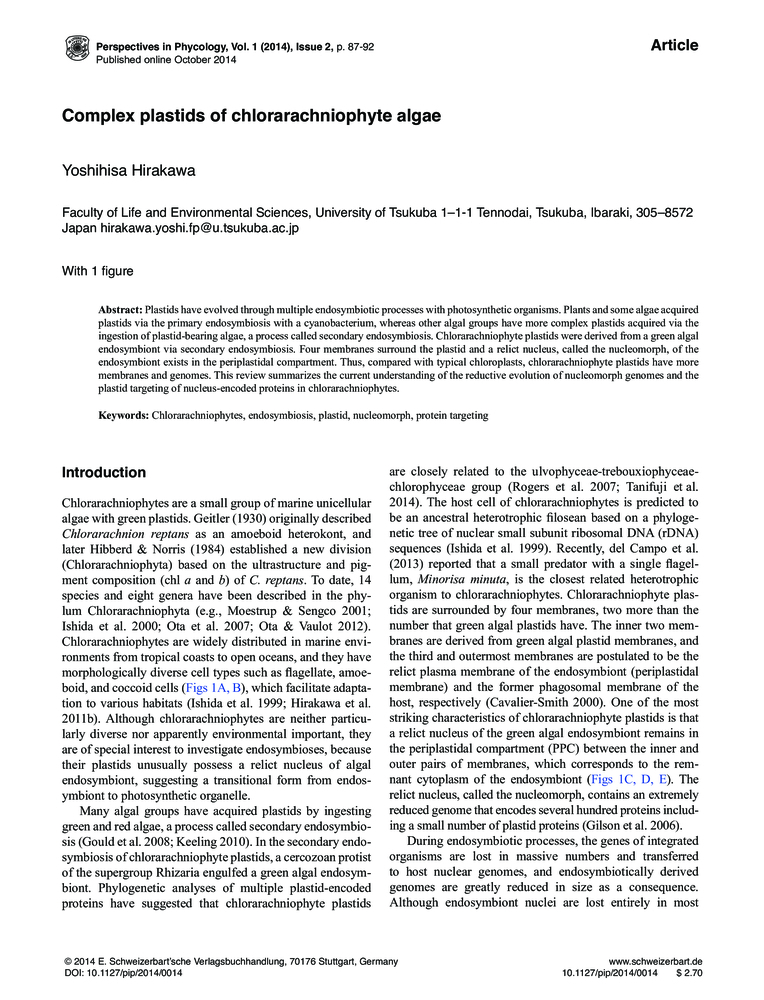Übersichtsarbeit
Complex plastids of chlorarachniophyte algae
Hirakawa, Yoshihisa

Perspectives in Phycology Vol. 1 No. 2 (2014), p. 87 - 92
veröffentlicht: Nov 10, 2014
Online veröffentlicht: Oct 1, 2014
Manuskript akzeptiert: Aug 26, 2014
Manuskript erhalten: Jun 14, 2014
ArtNo. ESP271000102004, Preis: 24.80 €
Abstract
Abstract Plastids have evolved through multiple endosymbiotic processes with photosynthetic organisms. Plants and some algae acquired plastids via the primary endosymbiosis with a cyanobacterium, whereas other algal groups have more complex plastids acquired via the ingestion of plastid-bearing algae, a process called secondary endosymbiosis. Chlorarachniophyte plastids were derived from a green algal endosymbiont via secondary endosymbiosis. Four membranes surround the plastid and a relict nucleus, called the nucleomorph, of the endosymbiont exists in the periplastidal compartment. Thus, compared with typical chloroplasts, chlorarachniophyte plastids have more membranes and genomes. This review summarizes the current understanding of the reductive evolution of nucleomorph genomes and the plastid targeting of nucleus-encoded proteins in chlorarachniophytes.
Schlagworte
Chlorarachniophytes • endosymbiosis • plastid • nucleomorph • protein targeting